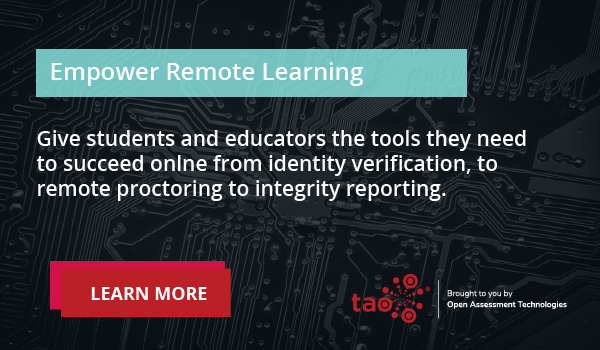As COVID-19 extends its reach into a new school year, administrators are once again faced with numerous challenges as to how best support students, teachers, and families with remote learning.
While districts’ and universities responses to the pandemic were largely reactive at the end of the last school year, the start of 2020-2021 represents an opportunity for both to be more proactive and forward-thinking in how they handle the new challenges. With that in mind, let’s explore some of the top questions on administrators’ minds about remote instruction right now.
How do I choose the right technology?
With so much buzz in the education technology space, it’s easy to get overwhelmed by all of the new and existing tech solutions on the market. But adopting the wrong tool can be expensive, time-consuming and frustrating — risks you can’t afford to take in an already complicated teaching environment.
When evaluating new technology options, keep in mind this guiding question: How will this tool solve an instructional challenge and improve student outcomes?
By linking all technology decisions back to instructional and outcome-based objectives, you’re much more likely to find the right fit. For example, if you’re looking to boost collaboration between students, start your search with tools that have been proven to meaningfully boost collaboration for that specific application.
During your search, you’ll also want to keep in mind that remote learning solutions do not exist in a vacuum; rather, they all work together to build your EdTech ecosystem. As such, try to verify that your tools will work together and share data seamlessly. Tools that meet the IMS Global Standards are verified for interoperability, guaranteeing that your learning tools will provide a frictionless learning experience and a clear, holistic view of student performance.
How do I support all students?
The shift to remote learning has not impacted all students equally; according to EdWeek, students from low-income and rural households have demonstrated significantly lower engagement in the digital classroom than their suburban and middle-class peers. Likewise, students with special needs have faced significant challenges in getting the individualized support they are used to in the classroom.
Adaptive learning and testing technology can solve for these challenges, empowering students to become self-regulated learners with content that is customized to their skill level. These tools gather data from student learning interactions and deliver tailored resources to address the needs of each learner.
When evaluating EdTech tools, keep an eye out for the following accessibility features:
- Adaptive assessment formats
- Assistive technology support
- Logical user interface
- Contrasting text and color use
- Descriptive text for test items and visual elements
How do I keep online classrooms secure?
From Zoom calls getting hijacked to concerns over compliance with federal student privacy laws, (particularly the Family Educational Rights and Privacy Act, or FERPA), administrators are rightfully concerned about the security and privacy of their online classrooms. To help prevent security threats in the new remote learning environment, EdTech recommends:
- Increasing ongoing security training for students and staff
- Adding measures to prevent phishing attacks
- Implementing and testing incident response guidelines for potential attacks
Additionally, administrators should ensure that their tech solutions are verified for interoperability under the IMS Global Standards. These standards guarantee that student data can flow seamlessly through your various applications while remaining safe and secure within your entire EdTech stack.
___
With the start of a new school year, administrators have an opportunity to build on what they’ve learned to provide elevated, equitable remote learning experiences for students and educators.
The right technology can help districts and universities support students and families and empower educators to create meaningful, personalized education experiences in these uncertain times. For more advice on how to tackle the remote landscape and find the right tech, speak to one of our specialists today.


